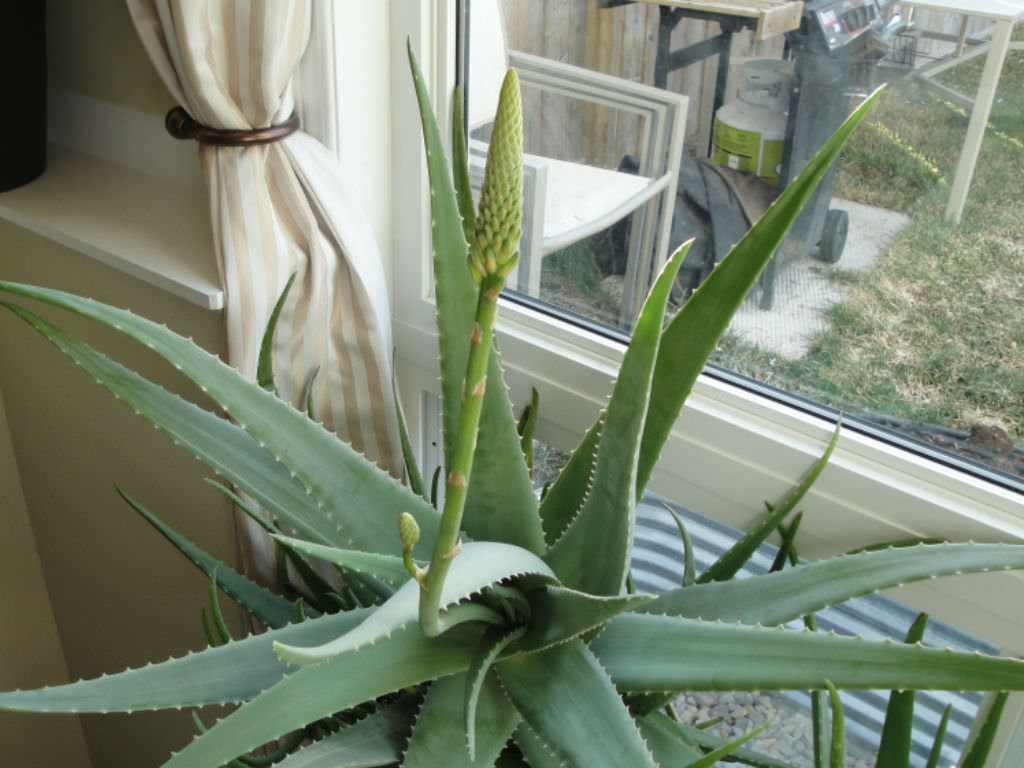You are not alone if you are fighting your Aloe vera for flowers. Most people struggle to get their Aloe vera plants to bloom when growing them indoors. But its tubular flowers, produced high on long elegant stems, are a rare sighting in households due to the inadequate sunlight they receive. Many clones available have orange flowers, but the real Aloe vera has yellow flowers.
Aloe vera is built for Africa's desert climate, where it receives large amounts of direct sunlight for most of the day. This large dose of bright light that Aloe vera is accustomed to does not translate smoothly to a household setting, where the house's location and the plant may limit the amount of sunlight that reaches the plant.
Adjusting the Indoor Placement of Your Aloe Vera Plant
Due to the Aloe vera's natural environment, the main trick is to give your houseplant as much light as possible. Indoor placement is key. Typically sitting on kitchen windowsills, Aloe vera does not receive the sunlight used to or needs when raised indoors. You want to place your plant on a windowsill that gets a lot of direct sunlight, with nothing obstructing the plant's line of the sun or keeping it in the shade. At certain points in the day, some areas of your house also receive more light than others. Therefore, it is best to change your plant's location throughout the day, allowing it to follow the sun. The more exposure to sunlight, the better. You can also move your plant outside during the summer months, as it is no longer in danger of freezing, and an outdoor environment nicely mimics the high-sunlight desert conditions it needs to bloom.

Other Tricks for Getting Your Resistant Aloe to Bloom:
1. Wait for your Aloe Vera to Mature
You may be expecting too much from your young plant. Aloe vera tends to bloom once it has reached maturity, a stage in its life that takes approximately four years. It is simply not ready if you have just begun caring for your plant. So have patience, and while you are waiting, take proper care of your Aloe vera by giving it the sunlight, water, and soil it needs to reach old age and bloom.
2. Know When to Expect Aloe Vera Flowers
Aloe vera does not have flowers year-round. It usually blooms annually in the early springtime, so time your expectations correctly. If you are concerned about why your plant has no signs of buds in the winter, that is just because the timing is not yet right.
3. Fertilize or Repot Your Plant
A healthy Aloe vera is more likely to produce the bright flowers you are looking for. This succulent needs soil that can provide it with adequate nutrients. You can keep your plant healthy by either giving your plant fertilizer or repotting it.
Another way to encourage Aloe vera to bloom is by propagating it. Aloe vera has offsets that grow off the main plant. You can remove them if you want a flowering plant. You give the main plant more energy to produce those tall, beautiful flowers by taking away the offsets.
Source: aloeplant.info
Links
- Back to genus Aloe
- Succupedia: Browse succulents by Scientific Name, Common Name, Genus, Family, USDA Hardiness Zone, Origin, or cacti by Genus
